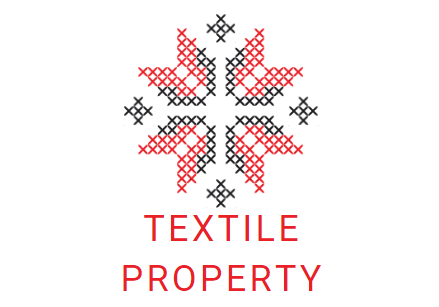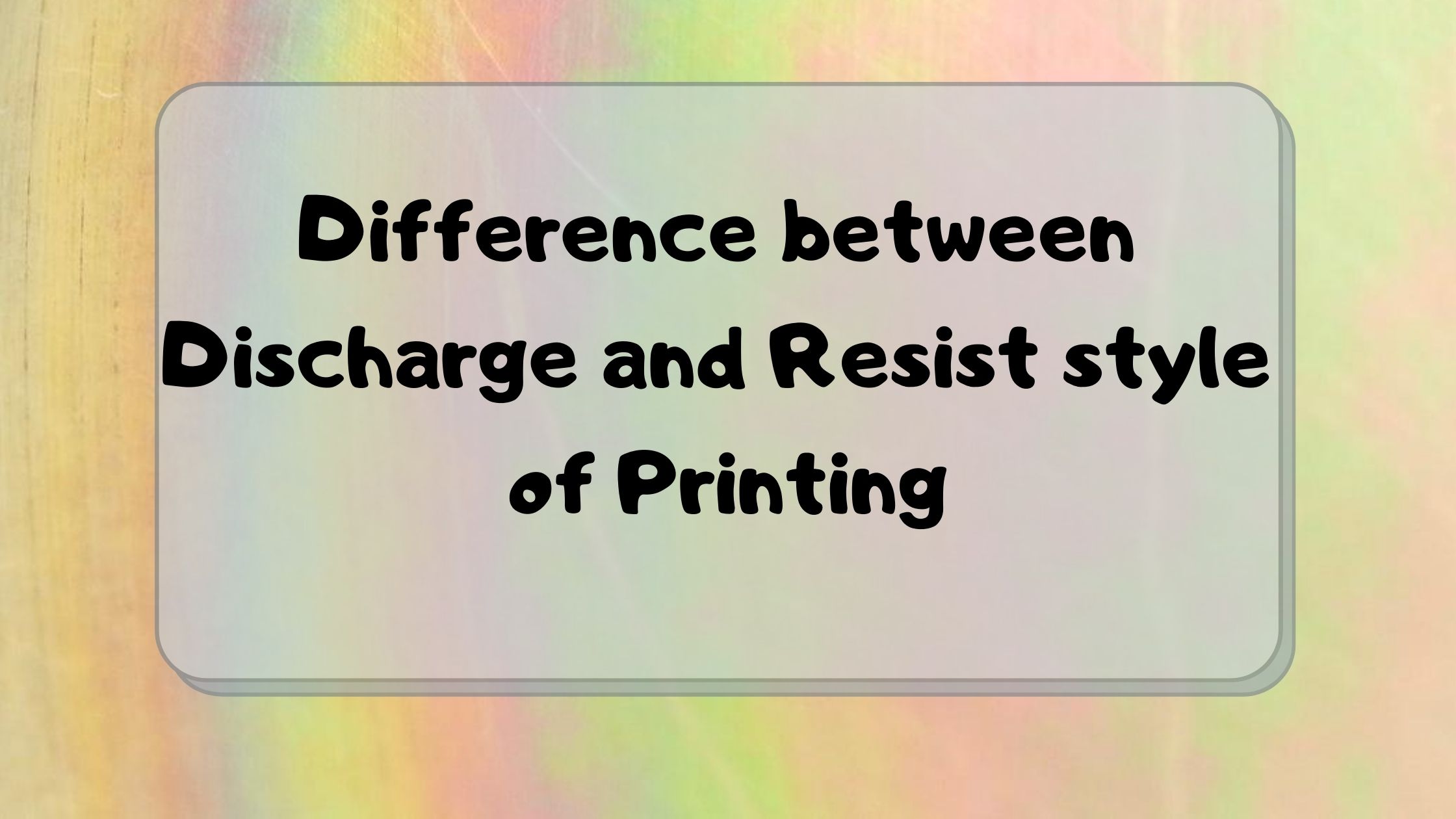All of us who are fabric printers, know about the basic printing styles. But most of us get confused between the discharge and resist style of printing. So, in this article, the difference between discharge and resist style of printing will be discussed briefly!
What is discharge style of printing?
The discharge style of printing is nothing but the removal of coloring compounds from the dyed articles. In this style, basically, a discharging agent is used to destroy the color compound from any dyed material. An oxidizing or reducing agent is used as a discharging chemical. Precisely, if I say this can be divided into two steps:
- First of all, the textile material is solid dyed thoroughly.
- The next step covers the removal of colors from the areas to be printed.
Discharge style of printing is of two types:
White discharge
A white discharge includes the thorough coloration of a dye onto fabric, I mean solid dyeing is carried out first. Then a printing paste of required viscosity along with such chemical that can completely destroy the ground color of the material in steaming. Thus a white design will pop out on the solid ground color.
Say, you want a white stripe on a red colored shirt by printing. Though the stripe effect can be done easily by weaving or crepe effect, you want it by printing. So, first of all you need to solid dye the shirt with red color. Then you have to prepare a chemical that contains such chemical which can destroy the solid ground color of the shirt. Then you have to print the paste in a stripe pattern. The chemical will do the job for you in steaming and finally, you will get your stripe pattern.
Examples of discharging agents:
- Reducing agent: Stannous chloride, Rongolite
- Oxidizing agent: Sodium chlorate, Potassium chlorate
Color discharge
Color discharge is the same as white discharge except you need to add color along with the printing paste. Firstly, solid dyeing is carried out. Then a printing paste is to be prepared that contains a discharging agent and colors which is extremely resistant to the discharging agent.
While the discharging agent will destroy the ground color, the mixed dye which is resistant to the discharging agent will sit on the top of that printed area and finally fix with the ground material. You can combine one or more one color in this single process.
This printing style is not widely used for any kind of bulk production due to expense and very precise process control.
What is resist style of printing?
In the resist style of printing, the dye resists agent hinders the dye penetration through the fabric or it may not help in dye fixation. Fabric is firstly printed with printing paste that contains such chemical which is capable to resist colors. After that, solid dyeing is carried out. But the particular area that is printed with dye resist chemical remains undyed while the area that doesn’t contain dye resist chemical gets completely dyed.
The physical resist can be used in this case like wax, pectins, fats or pigments. These substances can hinder the penetration of dye particles through the fabric. In batik printing, this technique is carried out in a short batch. Bulk production using this technique is not widely practiced.
Resist style of printing is also of two types:
White resist
In this technique, a white color fabric is printed with a paste containing chemicals that can resist penetration or fixation of dyes. Acids, alkali, oxidizing or reducing agents may be used as a dye resist chemicals. Again, a white fabric may be printed with such chemicals that can block the dye penetration through the fabric like any kind of waxy substance can hinder dye penetration.
Then dyeing is carried out. The printed area which contains the dye resist chemicals remains undyed and a white resist print will come out perfectly in this technique.
Color resist
Nothing drastic in this case. You just need to add color along with a dye resist agent in the printing. While the resist chemical will prohibit the color from penetrating, the dye will sit on the top of the printed area.
Let’s consider the printing of chlorotriazaine reactive dye. This dye is printed using designs or patterns along with sodium bicarbonate and sodium bisulfite. This two will help to create a covalent bond of this dye with the fiber.
Then thorough dyeing is carried out using vinyl sulphone reactive dye. The whole fabric will be dyed with this vinyl sulphone dye except that printed area. Do you know, why? this is just because of that sodium bisulfite chemical. It won’t permit the vinyl sulphone dye to form a covalent bond with the fiber. So, this vinyl sulphone dye can’t get fixed on that printed area.
Though the above discussion is enough to get the whole idea of the difference between discharge and resist style of printing, have a quick look at this topic below!
Difference between discharge and resist style of printing
Discharge Style | Resist style |
· It is always sharp in outline, bright in appearance | · It is less sharp in outline and less bright |
· Discharging agent used | · Resist salt used |
· Strong chemical reaction is required | · No chemical reaction due to pre dyeing |
· At first the fabric is dyed and then discharging printing | · At first resist salt printed, and then fabric is dyed |
· Two or more color can be dyed at a time | · Only two color can be dyed at a time |
· Discharging agent destroy pre fixed dye of fabric | · Resisting salt resist to be fixed of colour on the fabric |
· The cost of discharging agent is high | · Cheap |
· More wastages of dye | · Less wastage of dye |
To Wrap It Up!
Both of these discharge and resist style of printing is not widely used. The most convenient technique of printing is screen printing.
You can check this out: What is screen printing? Ultimate guide to screen printing

